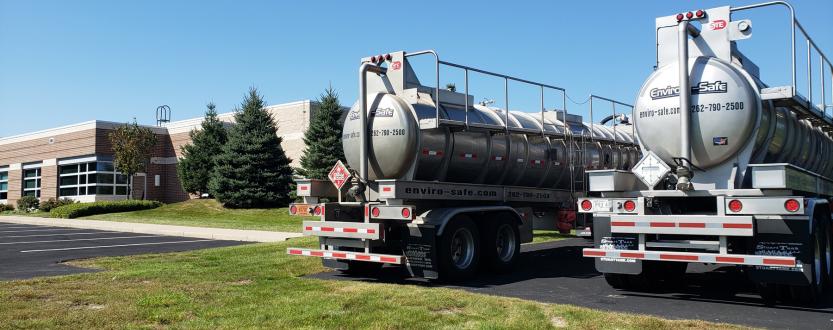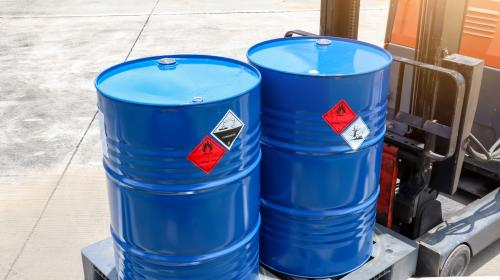In a previous post, How to Select a Treatment Storage and Disposal Facility (TSDF) we discussed how the Environmental Protection Agency’s (EPA) Resource Conservation and Recovery Act (RCRA) holds generators liable for safely generating, transporting, storing and disposing of their waste from “cradle-to-grave.” Generators are responsible for any mishandling that occurs with their waste – even if the violation occurs after it is transported away from their facility. This means that choosing the right transporter can be daunting – and high-stakes. But where do you start? Whether you have just launched your search for a transporter, or you have worked with your transporter for years but want to make sure they are crossing their T’s and dotting their I’s, here are some tips for selecting a transporter to work with your business.
Tip 1: Make sure they are in compliance with local, state and federal regulations.
Since waste transporters use public roads, railways and waterways, the EPA and the U.S. DOT developed requirements, including permits, licenses and EPA identification numbers. Some states also maintain public databases of licensed and permitted transporters. In addition to checking that your transporter’s permits/licenses are up to date, inquire about any prior violations. Ask about their driving records, any accidents, or any local, state or federal violations in the last two years. Some states, for example the state of Michigan, have their Department of Environmental Quality’s Waste Data System with information on a transporter’s compliance history. Lastly, be sure to also ask about any contracted companies your transporter uses to ensure they are also in compliance.
Tip 2: Find out how much insurance they maintain.
The amount and type of insurance required for a transporter will depend on your state and the type of waste generated at your business. The range typically falls somewhere between $1 and $5 million in liability insurance. Ensuring your transporter maintains proper insurance means you are protected from the costs of an expensive environmental cleanup if a spill or accident does occur. As transporters ourselves, we maintain the required amount of insurance for our trucks and drivers and a minimum 5 million dollars in insurance from any transporters with whom we do business.
Tip 3: Ask about their location and try to keep it local.
Transporting waste costs money – and the farther a transporter travels to collect and transport your waste, the more it will cost you, and the more emissions are released into the environment. Additionally, large, national transporters can become too large to offer the best pricing and customer service to their clients. At Enviro-Safe, we offer our transportation services in Wisconsin and the Midwest, which allows us to provide the best service and value to our customers. For customers outside of our region, we have a network of transporters in other areas we have worked and built trust with to do pickups in their respective regions.
Tip 4: Know what services you need and make sure they are the right match.
Before reaching out to new transporters, be sure you have a thorough understanding of the containers you use, the type, form (solid, liquid, gas, etc.) and quantities of waste you need transported, and how often you will require removal. Make sure the transporter offers and is experienced in the types of services you require. Ask them about the types of industries and companies they typically work with and request a reference from another company they service with similar needs as your own. If the transportation company is also a TSDF, ask about any type of additional labeling they require. For example, some companies will not accept hazardous waste in drums, despite its being a common method of storage, and only pick up bulk loads. At Enviro-Safe, we offer pickups of various bulk materials or containers that are in drums, totes, cubic yard boxes or pallets and provide waste profiling, sampling (if required) and waste profile characterization. Look for a transporter who is nimble enough to customize a solution that works for you.
Tip 5: Only work with transporters who offer written contracts.
For your own protection, it is a good idea to have a written contract that outlines the services the transporter will provide. Not doing so could cost you in the long run, so be wary of working with transporters who will not enter into a written agreement with you.
For tips 5-10, visit our blog next week to read “Top 10 Tips for Selecting Your Hazardous Waste Transporter: Part II”.



